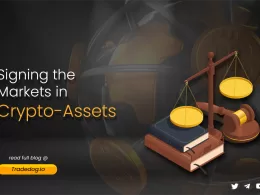Ethereum, the digital powerhouse facilitating global coordination, is gearing up for a transformation that promises a more efficient, secure, and sustainable future. The Ethereum roadmap lays out a plan for several ambitious upgrades, shaping the platform into a fully scaled and resilient powerhouse.
The first stop on this journey aims to make transactions more affordable. The roadmap addresses the high costs of rollups and their reliance on centralized components, reducing users’ dependence on operator trust. Additionally, robust security measures are being fortified to withstand various potential attacks, ensuring users can transact with confidence.
Improving the user experience is a crucial aspect of the roadmap. With added support for smart contract wallets and lightweight nodes, using Ethereum is set to become simpler and safer. Ethereum researchers and developers are proactively tackling tomorrow’s challenges today, future-proofing the network for the generations to come.
The Road Ahead: Six Key Phases
The Merge: From Proof of Work to Proof of Stake
“The Merge” marked Ethereum’s transition from energy-intensive Proof of Work (PoW) to the more eco-friendly Proof of Stake (PoS). This reduced Ethereum’s energy consumption by a staggering 99.95%, introducing staking rewards and fundamentally changing how ETH is issued. The transition to PoS makes Ethereum more environmentally friendly, significantly reducing its energy consumption and altering the way new ETH is issued.
The Surge: Scaling to New Heights
Next up is “The Surge,” aimed at scaling Ethereum to handle over 100,000 transactions per second. Currently, Ethereum can process around 12.9 transactions per second. With “The Surge” update, Ethereum aims to handle over 100,000 transactions per second. This represents a staggering increase of approximately 775,194%. In simpler terms, if Ethereum’s current transaction speed is like a bicycle, “The Surge” will transform it into a rocket.
Layer 2 solutions, particularly rollup scaling, take center stage. The Dencun upgrade, part of The Surge, tackles scalability issues by making data availability more efficient, significantly reducing gas costs for users. The Surge promises a substantial increase in transaction speed, potentially handling over 100,000 transactions per second, leading to a more efficient network and lower transaction costs for users.
The Scourge: Battling Economic Centralization
“The Scourge” is like a superhero phase for Ethereum, working to make sure everyone plays fair in the network. Imagine mini-markets where people can sometimes act in tricky ways to get extra benefits. The Scourge is here to stop that and make sure things are fair for everyone.
One tricky thing it tackles is called “maximal extractable value” or MEV. It’s a bit like someone trying to take advantage of the system for their gain. The Scourge is like a shield, protecting Ethereum from these tricky moves and making sure transactions are neutral and fair for everyone.
The Verge: Optimizing Data Storage
“The Verge” introduces Verkle trees to optimize data storage, improving efficiency and security while reducing node size, a crucial step in enhancing scalability. Verkle trees optimize storage, reduce node size, and enhance scalability, leading to a more efficient and secure Ethereum network.
The Purge: Simplification and Cost Reduction
Technical debt is like shortcuts taken during software development. Imagine you’re building a house, but to save time, you use lower-quality materials or skip some steps. Over time, these shortcuts can lead to issues, like leaks or cracks. That’s your ‘debt’ building up.
In Ethereum, technical debt could be due to quick fixes or older solutions that were used to save time or deal with problems that were urgent at the moment.
“The Purge” is like a renovation project for Ethereum. It simplifies Ethereum by removing technical debt and reducing the cost of network participation. This streamlining process eliminates historical data and bad debt, making it easier and more cost-effective for users to engage with the network. The Purge simplifies user participation, streamlining the platform, reducing costs, and improving the overall efficiency of Ethereum.
The Splurge: Post-Upgrade Optimizations
Finally, “The Splurge” encompasses all post-upgrade improvements, focusing on achieving 100,000 transactions per second on rollups and enhancing the Ethereum Virtual Machine (EVM), which manages the blockchain infrastructure and facilitates smart contracts. Post-upgrade optimizations aim to achieve higher transaction speeds and improve the functionality of the Ethereum Virtual Machine, further enhancing the overall performance of the Ethereum network.
Source Twitter.com VitalikButerin
Impact of the Upgrades
These upgrades translate into tangible benefits. The shift to PoS has made Ethereum more energy-efficient. The Surge phase could significantly boost transaction speed, handling over 100,000 transactions per second. The Scourge and Verge phases aim to enhance decentralization and security, strengthening trust in the Ethereum network. The Purge phase simplifies participation, making it more user-friendly and cost-effective.
Predictions suggest Ethereum could reach $6,500–$4,500 by 2025 and potentially soar to $20,500–$14,000 by 2030. These figures reflect the anticipated market value growth based on the positive impacts of the Ethereum roadmap.
Conclusion
Ethereum’s roadmap for the next five years is ambitious and promising. It aims to address the current challenges and prepare the network for future generations. While the journey is complex, the potential benefits in terms of scalability, security, sustainability, and market value are significant. As Ethereum continues to adapt and evolve, it’s an exciting time to be part of this blockchain revolution.









